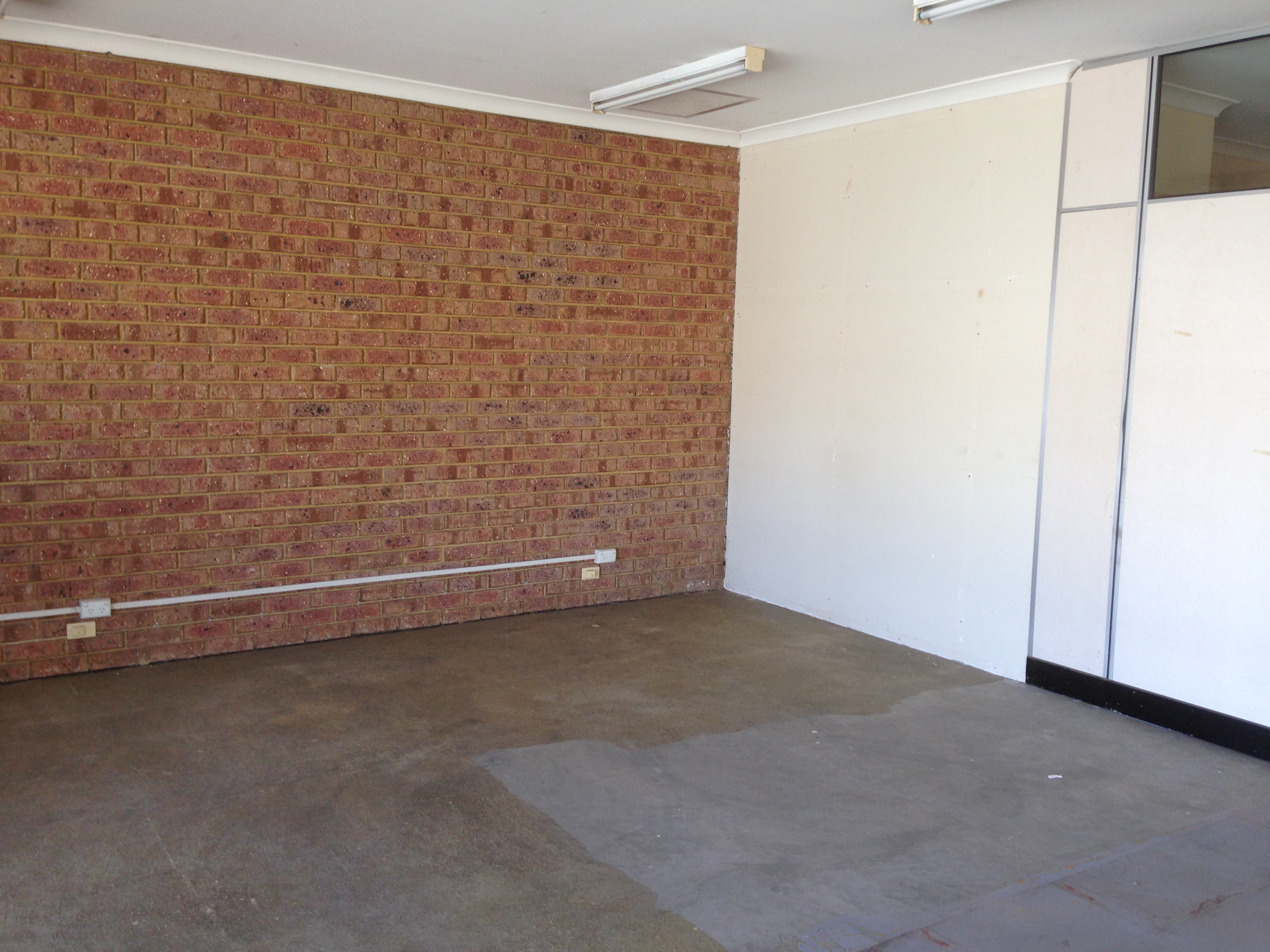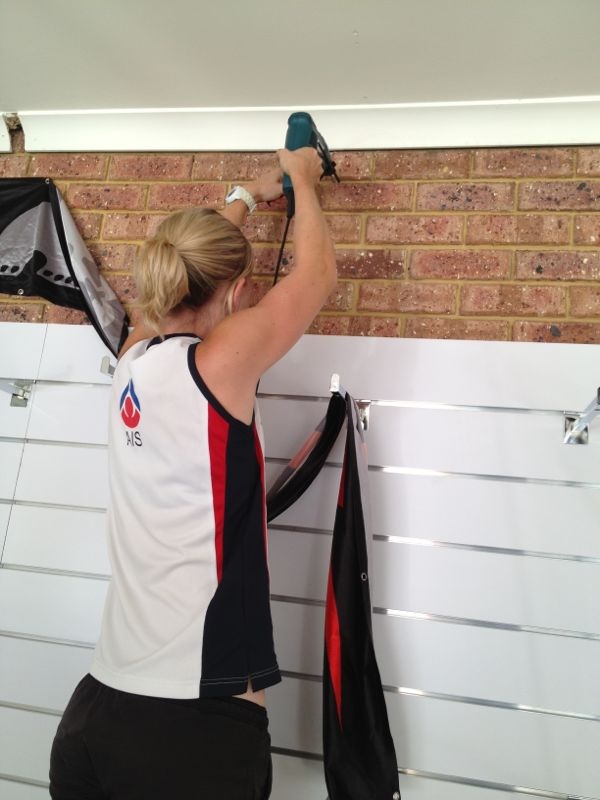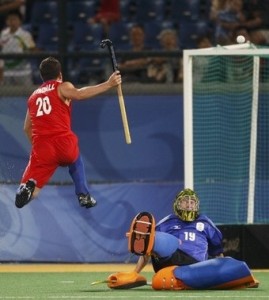With plyometrics (turns out it isn’t plymetrics, even though I thought otherwise, always thought it was plymetrics?!) needed for improving your jumping abilities and also useful for increasing agility and your explosive power, it is important that goalkeepers are made aware of this form of training and added it to their regime of outside-structured-training-training! They are a definitive aspect of athleticism when pushing out athletically and aggressively to save and explosiveness, ensuring an agile and athletic style that should crossover into your game and training sessions. It’s a standard part of training and exercising for football goalkeepers, who are expected to leave their feet to intercept and catch crosses, but they, for some reason, seem a little left out of the hockey repertoire.
And for me (and my perception!), they potentially are a very (too harsh?) over looked part of hockey goalkeeping, if you think about it. In the sense that they are not a part of training programme and goalkeepers generally may not be aware of them. So, in the case of reverting this and bringing them into educational and practical use, it would be good to see more , although I guess it’s a little harder (maybe, no excuses!) to jump up and down in full hockey kit, in comparison to football goalkeepers not being as hindered. I guess football has a more grounded coaching system (to some degree), but jumping is perhaps of more importance for catching crosses, which are important parts of the game for explosive based save making and athleticism, but still, it is something that can be used and adapted when we look at upgrading and developing our own game.
Generating force and height
The whole idea of plyometrics is to improve your explosiveness and power for those leaping motions. As well as the height or distance you can achieve (say if using the jumps to help with pushes and pushing out explosively for a full stretch, extension diving save)! It’s not really a repetitive drill in regards to learning things via muscle memory for a specific movement or saving motion, but a move that’s looking to push your ability to ‘explode’ in a movement upwards from your stance with good effort. It’s more about a continued effort to get higher each time and with greater speed.
And then there is the added psychological factor of intensity within your game, wherein you push yourself to play and attack the ball with more desire and explosive power; with this approach to “explosivity” (it’s not a word apparently, so I’ll just instigate the Dickensian neologism clause i.e. make up new words!), helping translate into an agile and athletic performance in games as you leap for ball you might not otherwise reach. When you jump up, you’re trying to push yourself to get higher, faster; to get , so that you can replicate this in a game where you may have to make an outstanding extension save, reaching out, before getting back up for another spectacular stop!
Exercises
Whilst I do have a rough understanding of plyometrics, this article isn’t really focused on specifics and guidelines (couldn’t you tell!)! More of an intro into this form of training; you can find a lot more about them via online searches for “goalkeeper ploymetrics” and such, or in goalkeeping books written for football. But regardless, it’s important to have an awareness about them, especially now that it’s the off-season in Europe and a great time to start doing fitness and off-pitch training in advance of pre-season.
There are some exercises, which you can do by yourself and won’t need a coach or equipment to work on. This also means you obviously don’t need any extra kit or equipment to do so (although you can find somewhere with steps or something I guess, to make use of that to jump on/to!). In terms of working by yourself, there are some basic drills you can do in your own time. You can do static jumps to see how high up you can get and push yourself to get higher each time, or do so more quickly. Skipping is also said to be useful, with the jumping itself on the scale of plyometric exercise.
http://keeper-skool.com/plyometrics-depth-jumps-pure-goalkeeping-power
If you have a suitable box to jump onto, then box jumps can also be useful:
Or if you have cones (easy to buy, you can even get them in Tesco’s these days, as far as I remember!), then you can do things like the following to feel “light on your feet” and comfortable hopping around (i.e. for explosive drive off lead foot for a high/low dive).
Practising
Age is going to be a factor according to the intensity; so the older you are (especially if you’re at a high level and about 20/in your 20’s), the more you can do for set reps, and a teenager should be doing a bit, yet not overdoing it! It’s just a case of being sensible but the workload of a mature goalkeeper isn’t the same as a young nine year old, obviously! In football they incorporate plyometrics into a drill that involves shot stopping, so they can work on footwork and plyometrics as a routine (to incorporate them into how they play as a goalkeeper), before making the expected save. When you do the exercises, it’s important to keep to the fundamentals and not go too fast to the point you’re not taking it on or getting the technique right and falling off balance and so on. Start small and build up, working your way up with intensity level and level of advanced technique, as you develop your explosive power and jumping abilities.
Standard jumping can be done anywhere so there’s no excuse! Jumping straight up and having your hands at your sides to balance and as a guidance as to how high you want to bring your knees and foot up is a good place to start. Box or obstacles and hurdles/posts to jump over, can then be utilised for more advanced technique.
The following articles give a developed explanation for the reason you need to do them and the intensity level required:
https://www.keeperstop.com/articles.php?artid=31
http://jinked.net/2012/08/28/improve-goalkeeper-agility-with-plyometrics-training/
Translating into game play
Working on plyometrics should help you become a more explosive and agile goalkeeper in your shot stopping and athleticism and agility as you play with intensity, rather than a passive approach. And there is an argument for the need for this kind of development to help you play to a suitably intense and competitive level in goal. Leaving your feet to make a high ‘diving’ save or jumping to stop drag flicks at a short corner, you need that level of explosive power and athleticism to get to the ball. In open play, diving’ high, or getting off the ground to challenge an aerial pass into the D (as is becoming more popular at the higher levels), you need to be able to get high up to cover. These are two key examples of where plyometrics would help you and your goalkeeping.
Add them to your training schedule!
Ultimately, it is a good idea to consider plyometric training and adding it to your schedule; you can only gain from it! You should also find that you are getting more explosive after such exercises, being more athletic with diving across or low because of the power you can achieve when you jump up or out, this explosive nature translating to your game as you compete more intensely and athletically. And you may want to be pushing yourself to get as high as possible, so you can end up being able to jump like this!

I will try and write (potentially doing a separate guide for off-pitch training and exercises, as I’ve started work on guides for different areas of goalkeeping and set plays and the ‘mental game’, which will eventually be available as downloads in PDF form) more in-depth guidance on variations and more technical and advanced drills, at some point, but for now, I hope this has been of some use!





